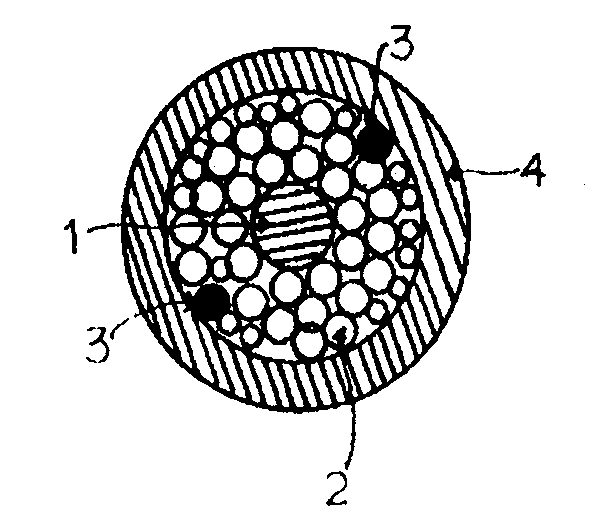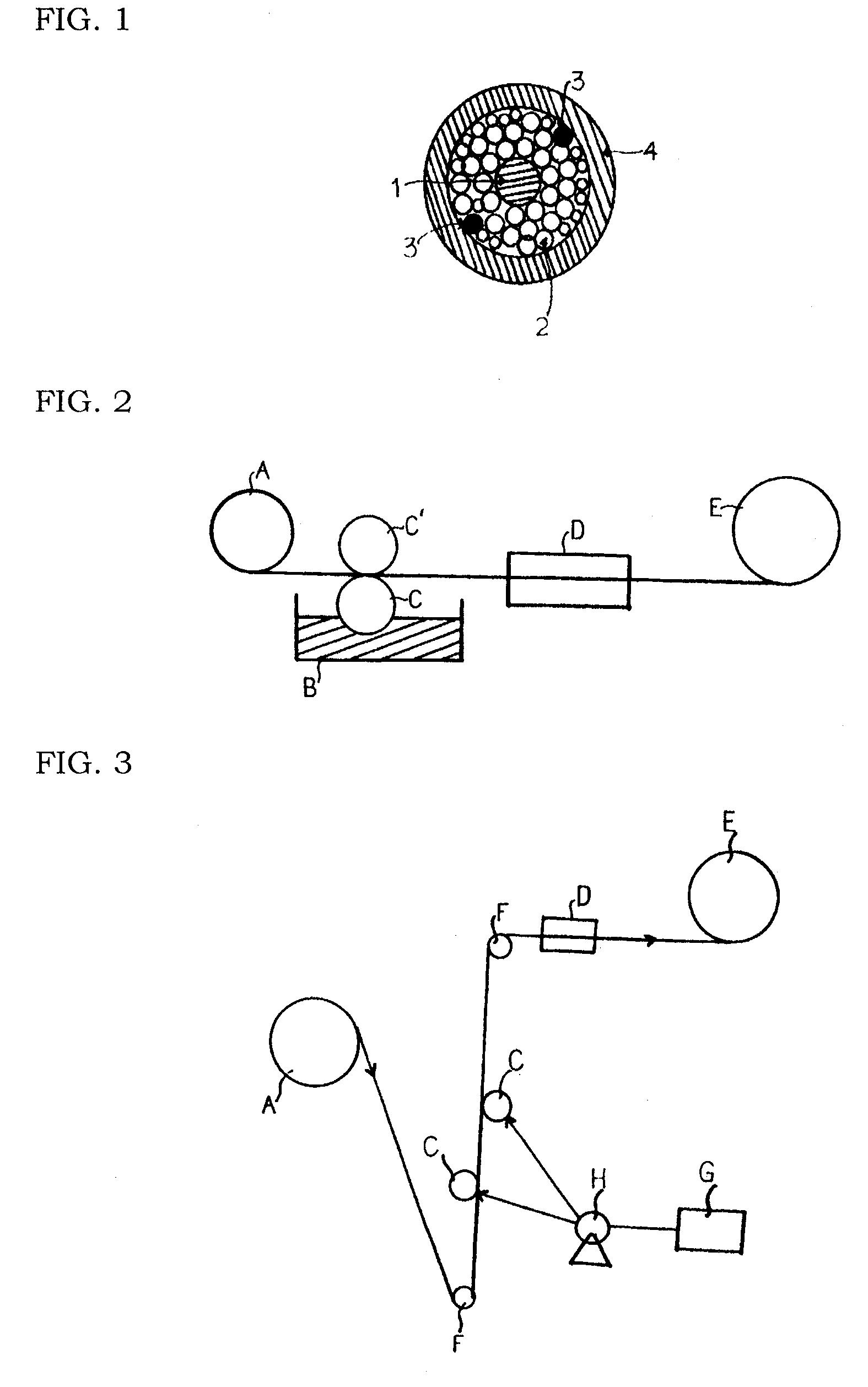Ripcord of optic cables and method of manufacturing the same
- Summary
- Abstract
- Description
- Claims
- Application Information
AI Technical Summary
Benefits of technology
Problems solved by technology
Method used
Image
Examples
example 1
[0061]A folded and twisted yarn A with total fineness of 3,000 denier was prepared, which consisted of two strands of wholly aromatic polyamide filament each comprising 1,000 mono filaments with mono fineness of 1.5 denier.
[0062]As shown in FIG. 2, the prepared folded and twisted yarn was passed over a rotational coating roller C that was partially immersed in a tank B containing a coating solution which included (i) a polyethyleneglycol binder having a number average molecular weight of 400 and (ii) a colorant having an average particle size of 5 μm dispersed in the binder to apply the coating solution to a surface of the folded and twisted yarn A to form a coating layer. Following this, the coated yarn was wound over a winder E to produce a ripcord 3 for optic cable.
[0063]The coating roller C was equipped with a squeezing roller C′ at the top of the roller C.
[0064]After covering an optic fiber 1 with the produced ripcord 3 together with a reinforcing material 2 made of a folded an...
example 2
[0066]A folded and twisted yarn A with total fineness of 4,500 denier was prepared, which consisted of three strands of wholly aromatic polyamide filament each comprising 1,000 mono filaments with mono fineness of 1.5 denier.
[0067]As shown in FIG. 3, the prepared folded and twisted yarn was passed over a coating roller C fed with a coating solution which included (i) a polytetramethyleneglycol binder having a number average molecular weight of 600 and (ii) a colorant having an average particle size of 5 μm dispersed in the binder, from a tank B containing the coating solution by means of an injector H to apply the coating solution to a surface of the folded and twisted yarn A to form a coating layer. Following this, the coated yarn was wound over a winder E to produce a ripcord 3 for optic cable.
[0068]After covering an optic fiber 1 with the produced ripcord 3 together with a reinforcing material 2 made of a folded and twisted yarn comprising wholly aromatic polyamide filaments, a r...
example 3
[0070]A ripcord for optic cable and an optic cable with a cross section shown in FIG. 1 were produced under the same conditions described in Example 1 except that an alternative coating solution which included (i) an aqueous acrylic resin binder, (ii) a pigment having an average particle size of 5 μm dispersed in the binder and (iii) water as a diluent was used instead of the coating solution described in Example 1 and, after applying the coating solution to a surface of the folded and twisted yarn A to form a coating layer, the coated yarn was first passed through a dryer D at 200° C. with a speed of 20 m / min before winding the yarn over a winder E.
[0071]Strength of the ripcord and convenience in distinguishing the ripcord from the optic cable were evaluated and the results are shown in the following Table 1.
PUM
| Property | Measurement | Unit |
|---|---|---|
| Temperature | aaaaa | aaaaa |
| Linear density | aaaaa | aaaaa |
| Force | aaaaa | aaaaa |
Abstract
Description
Claims
Application Information
 Login to View More
Login to View More - R&D
- Intellectual Property
- Life Sciences
- Materials
- Tech Scout
- Unparalleled Data Quality
- Higher Quality Content
- 60% Fewer Hallucinations
Browse by: Latest US Patents, China's latest patents, Technical Efficacy Thesaurus, Application Domain, Technology Topic, Popular Technical Reports.
© 2025 PatSnap. All rights reserved.Legal|Privacy policy|Modern Slavery Act Transparency Statement|Sitemap|About US| Contact US: help@patsnap.com


